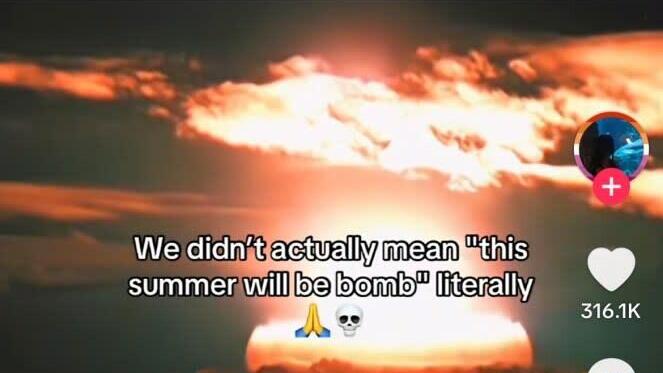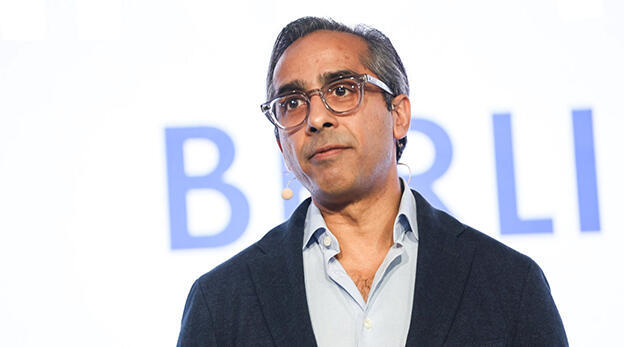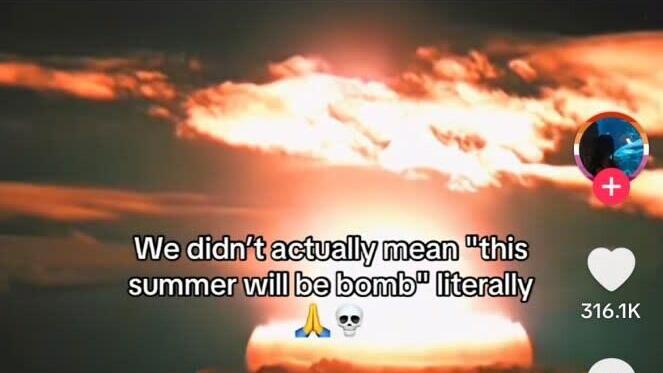
Fear, fatigue, and fake news: How Gen Z is processing the Iran-Israel war
While the war in Gaza brought masses of young Americans into the streets, the war with Iran is receiving a completely different response: memes about World War III and questions like “Will the war affect my Shein order?”
When the war in Gaza broke out in October 2023, campuses in the U.S. were burning. Protests erupted, lecturers were suspended, students were arrested, and the chant “Free Palestine” became the cultural call of the hour for Generation Z. But as missiles fly between Israel and Iran, and the phrase “world war” comes up more and more in global discourse – young Americans aren’t going out into the streets. They’re logging onto TikTok.
Instead of organized protests or solidarity with either side, the younger generation’s main response to the current conflict is dark humor, fear, and ridicule. Videos with the hashtag #WW3 are flooding the internet, with posts asking things like, “Will the war affect my Shein order?” or “You can’t draft me, I just got my eyebrows done.”
According to social media analysis, the activist discourse that accompanied the conflict with the Palestinians, which included harsh criticism of Israel, solidarity with Gaza’s residents, and organized global campaigns – is almost entirely absent in the confrontation with Iran. There are no protests on campuses, no mass petitions, and no viral visual campaigns.
Instead, the central fear among Gen Z is personal: that they will be drafted, harmed, or forced to give something up. TikTok has filled with satirical versions of “Get ready with me to be drafted” videos, where users prepare for war as if they were getting ready for a date.
One of the main reasons for the difference in response is the identity of the sides: The residents of Gaza were presented in the global narrative as an oppressed people, stateless, victims of prolonged occupation. Iran, on the other hand, is a regional, religious, homophobic, and chauvinistic power, and young Americans find it difficult to feel clear sympathy for it, even if they oppose their government’s foreign policy. In addition, Iran lacks effective public messaging in the West or grassroots movements working to build solidarity. The result is that online discourse is not shaped around ideological justice, but around fear over how the war might affect private life.
During the war in Gaza, many celebrities, musicians, and influencers came out against Israel – sharing infographics, Palestinian flags, and disturbing videos from Gaza. The war with Iran, on the other hand, is almost completely absent from celebrity accounts. When there is discourse, it mostly revolves around whether this is the beginning of a third world war, not around the human rights of Tehran’s citizens.
Part of this can also be attributed to political fatigue: a year of conflicts, fake news, and protests has drained the energy of many. Instead of forming a position, many simply suppress reality through humorous content. They do not support either side, only trying to emotionally survive the mental noise.
Fake news as a weapon
This move away from protests and ideological identification does not mean silence online. On the contrary. Within a digital space saturated with superficial content, instant reactions, and algorithms that promote sensationalism – a massive wave of disinformation is spreading. Precisely when people don’t choose a side – they become more vulnerable to external influences and intentional distortions of reality.
Since the Israeli strike in Iran on June 13, social media has been flooded with a wave of videos and images created by AI. Many of these videos depict dramatic missile strikes in Israel or Iranian military power, but in reality they are complete fabrications. Alongside this, old or out-of-context video clips are also circulating on the networks, sometimes from events in Ukraine, Pakistan, or even the U.S., and are presented as if they were filmed in the current combat zone.
In this space, fake news functions not only as an obstacle to understanding reality, but as a weapon in every respect. Different actors use it as a tool to sow confusion, to shape narratives according to their interests, and to exert psychological influence on the public. Fake content that presents Iran as a crushing victor or Israel as a helpless victim is meant to generate an emotional effect, not necessarily to reflect the truth.
The platforms, for their part, do not respond quickly enough. Verification mechanisms sometimes fail, algorithms promote sensational content at the expense of verified information, and the general public finds itself flooded not only with information, but with noise.
In a short time, “super-spreaders” of disinformation have emerged on social media: accounts with official-sounding names and blue checkmarks that maintain the appearance of an authoritative source, but in practice engage in the dissemination of false information.
The public is not indifferent, and public discourse is characterized by volatility. One moment there is deep fear, and the next moment cautious optimism, depending on the flow of rumors and updates. Amid all the noise, fact-checkers and independent activists are trying to impose order and provide real context, but in the face of the flood of misleading information, it is an especially difficult task.














